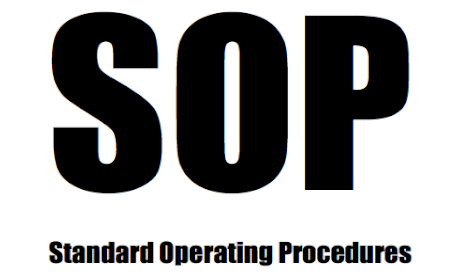Standard Operating Procedures: Samples
A standard operating procedure is a document that your company can use to control stages in a task so that all personnel can accomplish it similarly every time. Once you have printed the standard operation procedure, all your employees should be able to use it irrespective of their experience.last updated Saturday, March 30, 2024
#Standard Operating procedure #Headers and Footers
| | by John Burson |

QUICK LINKS
AD
Get access to EB 5 Visa Investment Projects
The standard operating procedure should contain all the information concerning the tasks in a logical manner, a stress-free to follow design.
Cover page
Every standard operating procedure should contain its number and title. For instance, if you are writing a standard operating procedure for a particular department, the name and number format should classify the office, task and procedure number. The cover page may also contain information on the writer, who went through and acknowledged the standard operating procedure.
Headers and footers
Utilize the headers and footers to continue the name and number on each page to track the sum of pages in the standard operating procedure. Subtitles can be used in the headers and footers to mark additional documents, such as charts, chains of command information, and diagrams. You can list the current review date and operational date of the standard operating procedure in the headers and footers.
Applicability and purpose
Documentation that states the purpose and drives for the standard operating procedure is a vital element. The document should define the purpose of the standard operating procedure, what is describes, whom it applies to, and whom it eliminates. For instance, a standard operating procedure for the Human Resources department should be implemented for HR employees, excluding individuals from other departments. The other persons should also have separate standard operating procedures from their department to put up with.
Procedures acknowledged
Every step in the task should be listed one after the other. You should be very ephemeral while giving relevant information so that the workers can understand all stages of the responsibilities. For steps that require numerous processes, you might use sub-groups. You should also give emphasis to all the problematic areas that usually cause hitches and misunderstandings to the person who reads.
You may also require writing eventuality steps to address expectable complications that could rise. If possible, add screenshots of thoughts so that the workers can visually authenticate the phases.
Free Consultation
Similar Pages
- Five Steps To Making Sales Through Social Media

- LinkedIn Sales Navigator, GMail & CRM: Working Together to Boost Sales

- Tools and services for B2B marketers on Social Media Marketing

- 10 Essential B2B Social Media Tools for Efficient Marketing

- B2B Social Media Marketing: Smart Ways to Generate Leads

- B2B Video Marketing: Best Practices to engage customers and improve conversion

- B2B SEO: Best Practices

- B2B Social Selling: Making a Foolproof Plan

Popular
Benefits of the EB-5 Visa Program | Guide
Search within Paperfree.com
